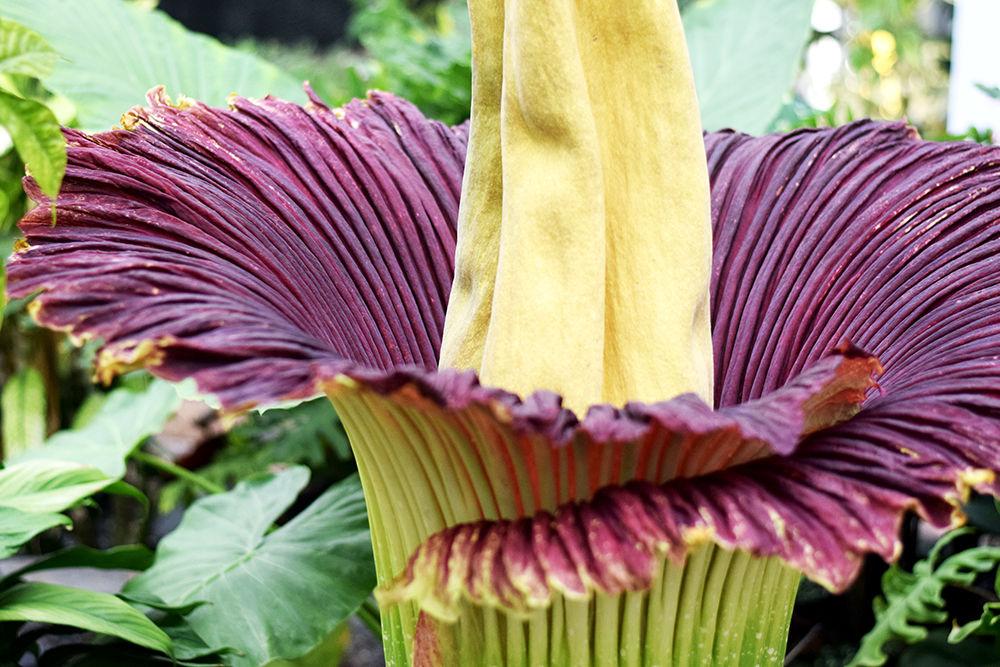A rare Indonesian plant known as a corpse flower recently bloomed in NC State’s Plant Conservatory for the second time since its introduction to the university.
The flower, otherwise known as Amorphophallus titanum or by its nickname Lupin, is known for its large size and unique smell, which is reminiscent of decaying flesh.
Brandon Huber, a Ph.D. student in horticultural science, has cultivated the plant for over a decade. Huber received the titanum over ten years ago from the Huntington Botanical Gardens in California.
“At that time [the corpse flowers] were very rare,” Huber said. “Because of that, they were very knowledgeable in growing them, they had a lot of them. So, I asked if I could have a small plant or buy a plant, and the curator gave me one to take at no cost.”
Huber said he continued to care for the plant through his time as an undergraduate at Temple University in Philadelphia. When he moved to North Carolina to pursue a graduate degree at NC State, Huber couldn’t leave his pet plant behind.
“I asked Diane [Mays, conservatory curator] if I could bring it here with me and house it here,” Huber said. “They were delighted to have it because of how rare a specimen it is.”
Lupin bloomed for the first time in 2016, when it was 13 years old. Now, three years later, the massive flower has bloomed once more.
The long periods between blooms are due to the plant’s unusual life cycle, according to Mays. The plant begins life as a potato-sized bulb that eventually enters a vegetative state. In this state, the plant collects energy to build an underground storage organ known as a corm.
“For the first bloom, it needs to garner enough energy in that corm to sustain such a large bloom,” Mays said. “Then after that, the corm is already pretty big, so it just needs to generate enough energy from that first bloom to the next.”
The corpse flower received its name because of its deep red color and smell of dead flesh, according to Mays.
“The inside will be nice and red to draw in pollinators,” Mays said. “It looks like flesh to pollinators, so that color draws them in.”
The corpse flower is incredibly rare and challenging to acquire, according to Huber. However, Huber’s own research and collaboration with other titanum growers around the world has made cultivating the plant easier than ever before.
Huber believes that incorporating the genetics responsible for the titanum’s size into other varieties of Amorphophallus may allow home gardeners to grow giant plants of their own.
“Some of these plants are not as finicky as the titanum is,” Huber said. “So, trying to incorporate some of those hardier genetics might make it easier for people to bloom these and have similar blooms in their home gardens in the future.”








